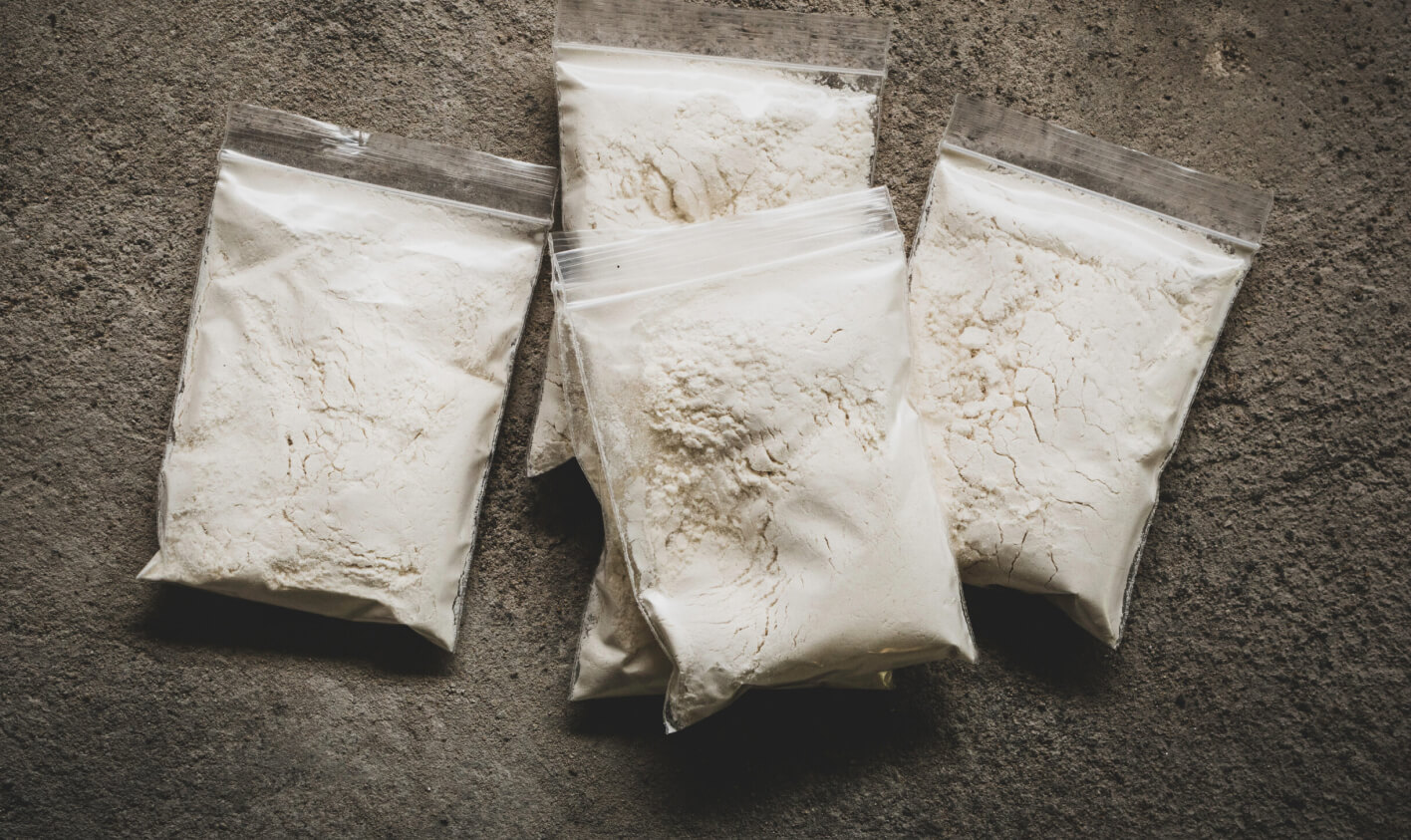What Does Heroin Look Like?
Heroin will be a white or brown colored powder. It can also be in the form of a black sticky substance, which is known as black tar heroin. The different forms of heroin may be used differently.
Types Of Heroin
There is technically one type of heroin, but it comes in different forms. Regardless of type, all heroin is derived from the poppy plant.[1] The appearance of the drug will depend on how it has been made and whether or not any cutting agents have been used. The only sure way to tell if a substance is heroin is to test it.
White Powder
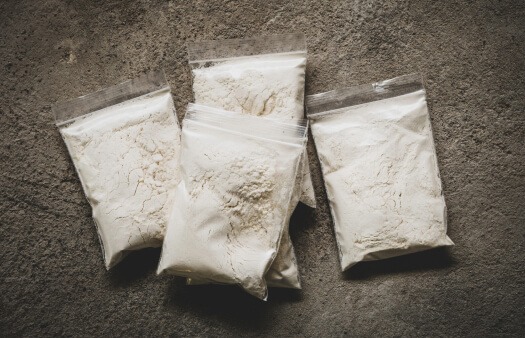
White powder heroin is the purest and most refined form of the drug. It is also the classic form of heroin, usually found on the streets. It appears as a pure white powder but can also have different color tones depending on which chemicals were used to process it and whether or not it has been “cut” or combined with other substances. White powder heroin can have an off-white, brown, pink, beige, or yellow tint.
Black Tar
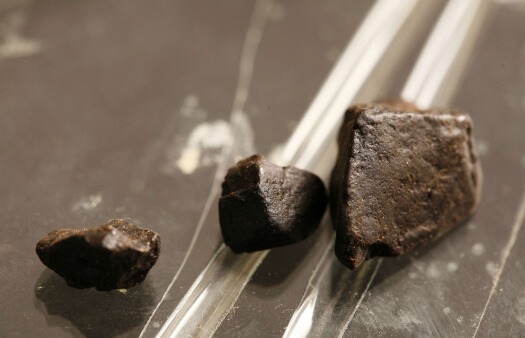
Black tar heroin is not as refined or pure as white powder heroin. It is less expensive but often considered more potent due to its higher morphine content. It is a tar-like sticky substance instead of a fine powder. The impurities in this form of heroin influence the consistency and color.
As the name suggests, black tar heroin is dark brown or black but may also be tinted orange. This form of the drug may also look like a chunk of solid coal before it’s ready to use.
Brown
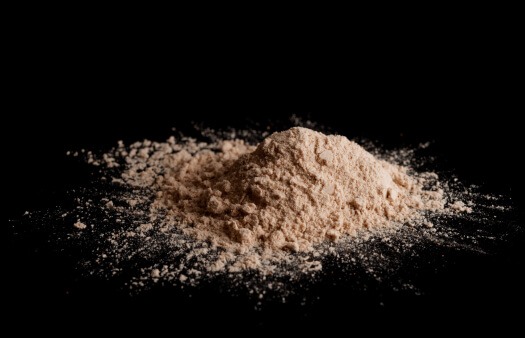
Brown heroin is another powder form that has not been fully purified. It is less potent than white heroin and is more difficult to dissolve in water. The true brown color of the drug is due to impurities and an incomplete purification process. This brown will be unique from the tan or brown tint that some white heroin powders will have.
Heroin Tablets
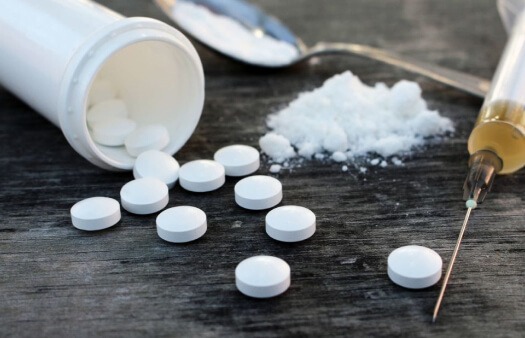
It is possible to put heroin into a tablet or pill form. Because heroin pills and tablets are illegal and not regulated like standard prescription medications, the drug can be pressed into any color or shape. Someone may not be able to tell if a pill contains heroin, but they may notice if it is an official prescription or not.
Heroin in tablet form will typically lack the usual markings that medication pills possess. They don’t have any extra coloring that some medications have. Heroin tablets can be of various colors, depending on the cutting agents used. Heroin pills may also be capsules containing powder or a tar-like substance.
Synthetic Heroin
Laboratories can create synthetic opioids that mimic the effects of heroin but are not derived from the opium poppy plant. Its appearance varies based on how it was made, its degree of purity, and what cutting agents have been used in the production.
Synthetic opioids can appear very similar to other forms of pure heroin. They often look like white powder but can also have an off-white, brown, or beige tint and be pressed into a pill.
How Is Heroin Used?
How heroin is used will usually depend on the form of heroin that is purchased and the method of use that is preferred.
Injecting Heroin
Injecting heroin directly into a vein is the most common and most dangerous way to use the drug. This allows the drug to work quickly to provide the fastest and most intense high and can increase the likelihood of adverse effects or overdose.
The drug must first be heated and turned into a liquid before being injected into the vein. The liquid is then drawn into a syringe and injected directly into the vein. A tourniquet is also common to make the veins easily accessible.
Smoking Heroin
Inhaling or smoking heroin is common with non-liquified forms of the drug, such as black tar heroin or brown heroin. It can also be made into cigarettes and smoked or melted on top of a piece of foil.[2] As fumes rise from the foil, they’re inhaled through a straw. This method allows the drug to enter the bloodstream quickly through the membranes in the lungs.
Snorting Heroin
Heroin, particularly in its powdered form, is commonly snorted. Even forms that do not dissolve easily in water can be prepared for snorting. Black tar heroin can be frozen and then ground up to form a powder that can also be snorted.
Ingesting Heroin
When heroin is in pill form, it can be swallowed and ingested. This method may cause the drug to take longer for the effects to present because the body must first dissolve and absorb it through the intestines. The active agent of the drug may also be diluted, reducing the effects due to the filtration process through the liver before it circulates throughout the body.
Common Heroin Cutting Agents
Cutting agents are used when the goal is to “dilute” the heroin. This can increase the profits for the dealer. Sometimes, the cutting agents used can be more dangerous than the drug itself. Someone may take heroin, not knowing what other substances it contains, increasing the risk of accidental overdose.
Common cutting agents for heroin include:
- Sodium chloride
- Powdered milk or milk sugar
- Corn starch
- Citric acid
- Fructose
- Calcium carbonate
- Mannitol (diuretic)
Other drugs may be added to heroin for the dealer to create a “unique product.” These are known as “adulterants” and are added to produce additional effects. Some of these include:
- Cocaine
- Strychnine
- Acetylsalicylic acid
- Caffeine
- Diphenhydramine
- Fentanyl
- Carfentanil
Signs Of Heroin Addiction
When someone becomes addicted to heroin, there may be health and lifestyle indicators. Common signs of heroin addiction include:
- Chest pains
- Kidney problems
- Confusion
- Rapid increase in heart rate, blood pressure, and body temperature
- Altered mental status
- Heart attack
- Stroke
- Circulatory collapse
- Death
Heroin Treatment And Recovery
In 2022, there were 5,871 reported deaths due to heroin overdoses.[3] However, overdose from heroin can be prevented if treatment is sought.
During the earliest stage of treatment, the medical and therapeutic care team will work directly with the patient to help them detox safely. With medication-assisted treatment and dedicated support, the risk of relapse is greatly reduced.
Inpatient treatment may be recommended to help you or your loved one focus on treatment without distractions. During an inpatient program, the patient will participate in various types of therapy and develop long-term recovery strategies.
If you or someone you care about is struggling with heroin addiction, know that it’s possible to get on the road to recovery. The team at Alpas Wellness is ready to help you get on the path to sobriety.
Learn More About Admissions
